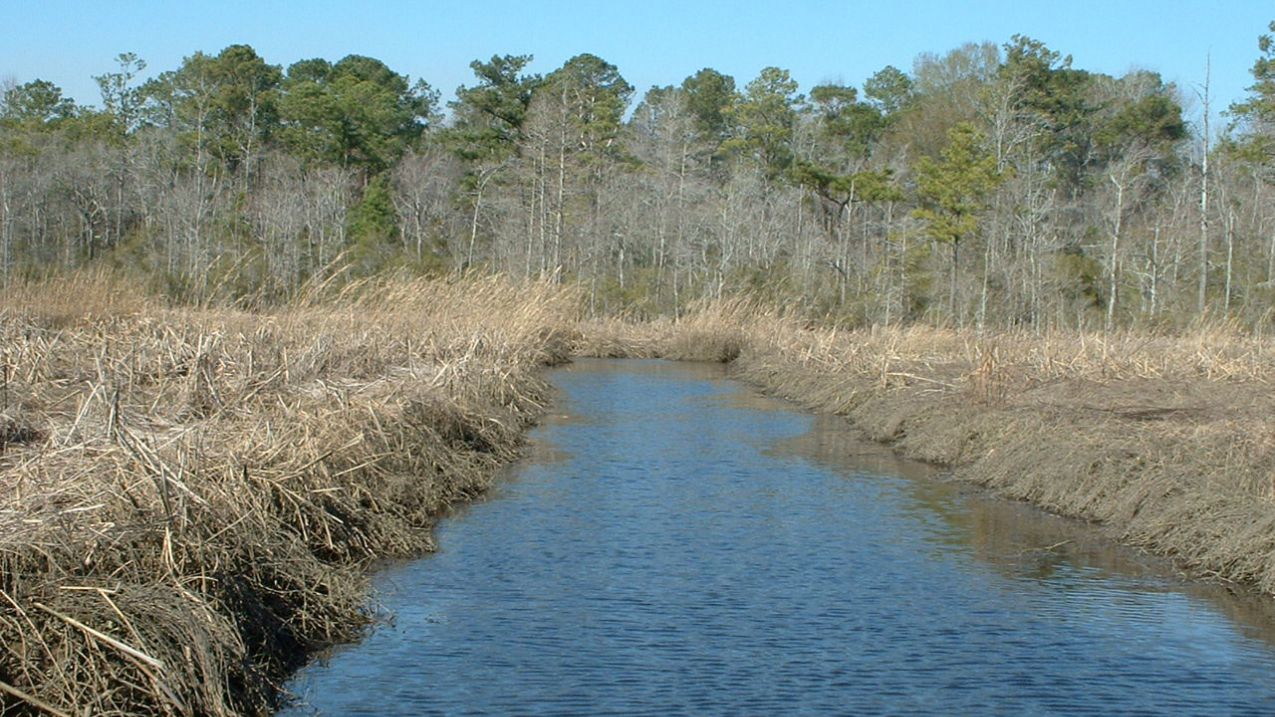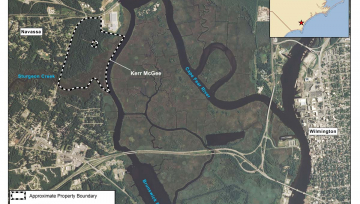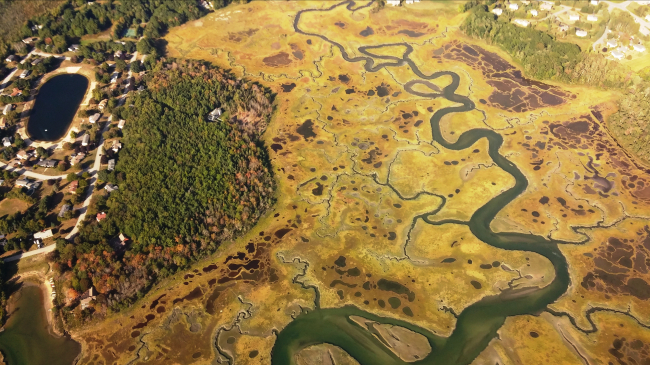A fund administered by NOAA, the U.S. Fish and Wildlife Service, and the North Carolina Department of Environment and Natural Resources, in their capacity as natural resource trustees, has received a disbursement of more than $13 million and anticipate receiving an additional estimated $9 million to restore natural resources harmed by the activities of Kerr-McGee Chemical Corp. as part of the largest environmental settlement in U.S. history.

Photo of the affected site in Navassa, NC. Credit: Sara Ward, USFWS. Source = http://www.fws.gov/news/ShowNews.cfm?ID=FEE980F4-5056-AF00-5BE6708DEF414DED (Image credit: USFWS)
The jointly recovered funds will be used in a multi-year effort to restore natural resources and habitats injured by the release of hazardous substances from the former Kerr-McGee Chemical Corp. wood treatment facility in Navassa, North Carolina. The trustees also received an earlier disbursement of $915,836 for the site.

The two disbursements are part of the U.S. Department of Justice’s (DOJ) settlement with Andarko Petroleum Corp. and it subsidiaries. The $5.15 billion settlement is the largest payment for the cleanup of environmental contamination ever obtained in a DOJ lawsuit.
Environmental damage in the Navassa region, which includes the Cape Fear River watershed, was the result of creosote-based wood treatments that occurred on the site from the mid-1930s until 1974. As a result of this industrial activity, hazardous substances such as polycyclic aromatic hydrocarbons have been found in on-site soils, groundwater, and Sturgeon Creek marsh sediments, which provide important habitat for fish, birds and other wildlife.
“Coastal wetlands like the areas impacted in North Carolina provide important environmental and economic services,” said Russell Callender, acting assistant NOAA administrator for the National Ocean Service. “Using these funds to restore habitat will benefit fisheries and wildlife and provide protection from storms, all of which will directly benefit the coastal communities and economies that depend upon them, while improving coastal resilience.”
“Restoration is the goal of the Natural Resources Damage Assessment process,” said Cindy Dohner, the U.S. Fish and Wildlife Service’s southeast regional director. “The Fish and Wildlife Service and the other trustees look forward to talking with citizens, restoring the natural resources impacted in this watershed and improving water quality and habitat for the people and the fish and wildlife that depend upon them.”
“Protecting the environment is vital to our continued economic prosperity in North Carolina,” said Donald R. van der Vaart, secretary of the North Carolina Department of Environment and Natural Resources. “We’re confident this settlement will enable us to restore and protect important natural resources on our beautiful coast and protect the quality of life that brought many of us to North Carolina.”
Under the Comprehensive Environmental Response, Compensation, and Liability Act, the natural resource trustees are required to use these funds to restore natural resources and services that were lost as a result of the site contamination. Types of projects that may be selected by the trustees include restoring and protecting wetland, river and estuary habitats that benefit the natural resources of the Cape Fear River watershed. The trustees will develop these projects as part of a restoration plan that will incorporate input from the public.
The mission of the U.S. Fish and Wildlife Service is working with others to conserve, protect, and enhance fish, wildlife, plants, and their habitats for the continuing benefit of the American people. We are both a leader and trusted partner in fish and wildlife conservation, known for our scientific excellence, stewardship of lands and natural resources, dedicated professionals, and commitment to public service. For more information on our work and the people who make it happen, visit www.fws.gov. Connect with our Facebook page, follow our tweets, watch our YouTube Channel and download photos from our Flickr page.
NOAA’s mission is to understand and predict changes in the Earth's environment, from the depths of the ocean to the surface of the sun, and to conserve and manage our coastal and marine resources. Join us on Facebook, Twitter, Instagram and our other social media channels.
Contact:
Ben Sherman
NOAA
301-713-3066
Tom MacKenzie
USFWS
404-679-7291
Jamie Kritzer
NCDENR
919-707-8602



